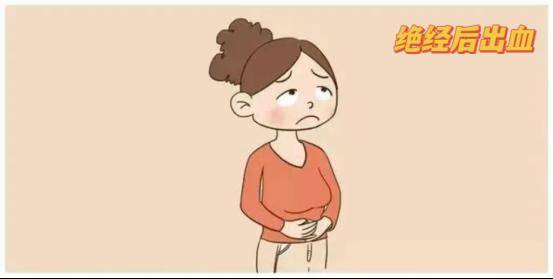Patients who come to the gynecological outpatient clinic due to postmenopausal vaginal bleeding often face different reactions. Some patients fear they may have malignant tumors and appear worried, while others see it as a second spring in life and feel happy. So why does postmenopausal bleeding occur? Is postmenopausal bleeding a “blessing” or a “curse”? Let’s discuss postmenopausal bleeding together today.
1. What is postmenopausal bleeding?
Postmenopausal bleeding refers to vaginal bleeding that occurs one year or more after a woman’s menstrual cycle has stopped.
2. What are the common causes of postmenopausal bleeding?
1. Senile vaginitis: After menopause, the secretion of hormones by the ovaries decreases. The external genitalia and vaginal mucosa become thinner, making the blood vessels beneath the mucosa more exposed. Bleeding may occur easily during sexual intercourse or daily activities, with minimal bleeding often noticed when wiping the external genitalia.
2. Cervical lesions: Older women tend to overlook cervical lesions, avoiding routine gynecological examinations and cervical cancer screenings. However, after menopause, the immune system weakens, making them more susceptible to HPV infections that can lead to cervical lesions.
3. Endometrial abnormalities: With improved living standards, many postmenopausal women often face challenges such as obesity, hyperlipidemia, hypertension, and diabetes. Despite lower estrogen levels after menopause, adipose tissue can still produce small amounts of estrogen. Estrogen stimulates the growth of the endometrium, while progesterone counteracts this effect and is produced after ovulation. As there is no ovulation after menopause, estrogen continues to stimulate endometrial growth without the counteraction of progesterone, leading to endometrial abnormalities.
4. Other conditions: Cervical polyps, endometritis, intrauterine fluid accumulation, endometrial polyps, etc.
3. How to prevent postmenopausal bleeding and how to handle it if it occurs?
1. Maintain healthy habits: A balanced diet, regular exercise, and avoiding excessive use of hormone replacement therapy can help maintain overall health and reduce the risk of illnesses. Avoiding certain medical treatments that may increase the risk of diseases.
2. Regular check-ups: Routine gynecological examinations, pelvic ultrasounds, and cervical cancer screenings can help detect potential health issues early and take appropriate treatment measures.
3. Seek medical attention promptly: Visit a hospital immediately upon noticing abnormal vaginal bleeding.
In conclusion, postmenopausal bleeding is not a signal to be taken lightly. It should not be underestimated or mistaken for a sign of youthfulness. Do not carry excessive psychological burdens, and seek medical attention promptly to address the issue.
Dr. Chen Yurou, Department of Minimally Invasive Gynecologic Oncology at Shenyang Fifth People’s Hospital, Resident Physician. Graduated from Liaoning University of Traditional Chinese Medicine, specializing in Traditional Chinese Medicine Gynecology, a postgraduate student skilled in the diagnosis and treatment of common gynecological diseases and benign and malignant gynecological tumors. Proficient in colposcopy diagnosis and treatment, as well as the treatment of cervical precancerous lesions.


